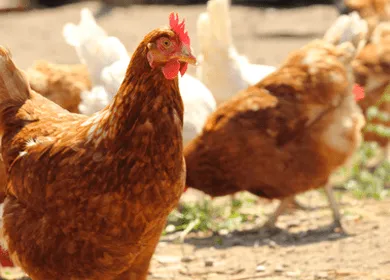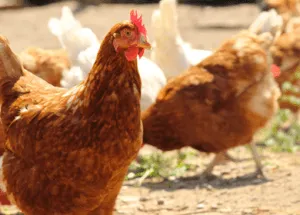
- Share on Facebook20
- Share on Pinterest
- Share on Twitter
Chickens that are raised in a completely free-range environment are exposed to fresh air, sunshine, plenty of space and eat what chickens are supposed to eat, must be happy. They spend the day munching on grubs, bugs, seeds and vegetable scraps while their factory-raised cousins suffer in confined spaces with little or no access to the outdoors.
 Hormones, Antibiotics and Chickens
Hormones, Antibiotics and Chickens
Although some people may think that chickens are treated with hormones, the USDA does not permit hormones to be used in the raising of any type of fowl including chickens. However, the government does allow farmers to use antibiotics to treat illness if needed. The drugs must be withheld for a period prior to the time of slaughter according to federal regulations.
Understanding Labels
There is always confusion when it comes to understanding food labels. While you may have heard the terms “free range” and “organic” before, you might not know exactly what they mean when it comes to poultry.
Free Range – Poultry operations that allow chickens some time outdoors, can claim the “free range” label. However, this title is a little ambiguous because it does not dictate how much time outside has to be given and does not ban the use of pesticides, herbicides or antibiotics.
Organic – In order for chickens to receive the “USDA Organic” label they must be raised according to the USDA National Organic Program Standards. This includes such things as attention to renewable resources, conservation and biodiversity. Growing areas are required to be free from pesticides and herbicides. Certified organic poultry must be allowed outside and have access to direct sunlight and freedom of movement. Organic poultry also has to be antibiotic free.
Antibiotic Free – This basically means that the poultry was raised without the use of antibiotics but may or may not be free-range.
Nutritional Advantage
Free-range organic chickens raised without antibiotics are better nutritionally than “regular” chickens. Chickens are foragers by nature and when they are allowed to forage for their food they become healthier for themselves and for us. In addition, chickens that are given antibiotics may have traces of chemicals in their fat. Factory chickens are fed unhealthy concoctions that are not beneficial to chicken health but make big fancy birds that seem to sell well. By comparison, free-range chickens are much smaller than their factory-raised cousins. However, don’t let size fool you, they pack a powerful nutritional punch and are free from unhealthy chemicals.
The Best Choice
The best choice is to buy organic, free-range chicken from a local farm, or raise your own chickens. If none of these options are possible, purchase organic chicken from your grocer. The extra cost is well worth the peace of mind and you can often stock up on sale days. Keep in mind, the happier the chicken, the healthier the meat!
Eating meat is a personal choice, and we respect that some choose not to. If you do eat chicken, do you try to choose organic, free range chicken?
– The Alternative Daily
- Share on Facebook20
- Share on Pinterest
- Share on Twitter

